calsfoundation@cals.org
Thomas Chipman McRae (1851–1929)
Twenty-sixth Governor (1921–1925)
A lawyer, banker, and politician, Thomas Chipman McRae represented the Third Congressional District for eighteen years and served as governor from 1921 to 1925. During his governorship, he fiercely fought to revise the tax system to adequately fund Arkansas’s dilapidated highway and educational systems. McRae was the last Arkansas governor to have served in the Confederate forces.
Thomas McRae, the eldest of five siblings, was born on December 21, 1851, in Mount Holly (Union County) to Duncan L. and Mary Ann (Chipman) McRae. Duncan McRae, a founder of Mount Holly, was a farmer.
In 1863, McRae’s father died, leaving him to run the farm during the chaos of the Civil War. Before the conflict ended, McRae briefly served as a courier for Confederate troops in southwestern Arkansas. When his mother remarried in 1868, he was freed from his family duties, and he turned to his formal education. Attending several private schools in Arkansas before entering the Soule Business College in New Orleans, Louisiana, he finished his education in law at Washington and Lee University in 1872. By 1873, he proved proficient for the Arkansas bar and began practicing law in Rosston (Nevada County). He married Amelia Ann White in December 1874. They had six daughters and three sons, with his law practice continuing to grow. When the new Nevada County Courthouse relocated to Prescott, McRae moved his family closer to his center of business.
Entering politics in 1876, McRae was elected the Democratic representative in the state House of Representatives seat for Nevada County, becoming noted for support to pay railroad, levee, and Holford bonds, while simultaneously holding local positions in Prescott such as city attorney and city council member. Additionally, McRae served as a leader in the Democratic Party in Arkansas, which enabled him to defeat four challengers in the race for the Third Congressional District seat in 1884. In the U.S. Congress, McRae chaired the House Committee on Public Lands, supporting the return of unclaimed land from railroad programs for potential public use, either for private purchase or for what eventually became the start of several national forests. Furthermore, McRae began to display populist leanings by advocating free silver, increased taxation of big business, and an income tax. In 1903, he retired from Congress after serving eighteen years and establishing himself as a progressive politician interested in improving the lives of his constituents.
Returning to private life in Prescott, McRae resumed his law practice before purchasing the Bank of Prescott in 1905. Working diligently within Arkansas to promote sound banking, he was elected president of the Arkansas Bankers Association in 1909. Utilizing his past political skills, he influenced banking legislation in Arkansas and spoke nationally in support of the Federal Reserve System.
McRae’s focus on banking did not detract from his legal and political aspirations. In 1917, he was elected president of the Arkansas Bar Association. The following year, he served as an at-large delegate in the ill-fated attempted to revise the Arkansas Constitution; the new document was doomed due to its overly progressive spirit. Afterwards, the continued pleas for assertive, progressive leadership led to increasing pressure upon McRae to seek the governorship.
The T. C. McRae House, listed on the National Register of Historical Places, was constructed in 1919.
Agreeing to run in the election of 1920, the sixty-eight-year-old McRae bettered his closest opponent, Smead Powell, in the vicious primary election by 11,000 votes before trouncing the opposition, the Republican Wallace Townsend and the independent Josiah H. Blount, in the general election. He won sixty-five percent of the vote, an outcome that resisted the national trend that swept Republicans into power for a decade.
Touting a progressive platform, McRae did not shrink from suggesting needed improvements during his inaugural address to the state legislature. He advocated reforms such as revamping the penitentiary system, eliminating a complicated series of boards and commissions, restructuring the approach to highway construction, and increasing the efficiency and accountability of the state’s education system; the legislature quickly balked. Preferring the political status quo, they granted McRae minor adjustments in boards and commissions, utility control returned to the municipalities, and a slight millage increase for educational institutions.
The most pressing problem during McRae’s first gubernatorial term was Arkansas’s inability to improve the highway system. While the Alexander Road Improvement Act was originally passed during Governor George Washington Hays’s term, the number of districts multiplied exponentially during Charles Hillman Brough’s governorship. Brough enabled the state to qualify for federal assistance, but the patchwork of local road improvement districts was a disaster by the time of McRae’s election in 1920. Each independent district possessed taxation powers to remedy bond debt on local projects; furthermore, each entity controlled money flow and construction, creating a maze of districts with little supervision and less monetary accountability. Referring to the complicated situation, McRae stated, “This thing is a scandal and a shame and the odor of it reaches to heaven.” Suggesting a solution that would shift control to a centralized authority to organize construction efforts, eliminate suspected corruption, and effectively meet the requirements for federal monies, McRae found a less-than-cooperative state legislature, which refused to relinquish control of these politically lucrative districts. Thus, McRae requested the assistance of the U.S. Bureau of Public Roads to suggest legislation to solve this dilemma. Placing the suggestions in a bill, the state legislature refused to agree to it, instead passing a one-cent-per-gallon gasoline tax and an increase in vehicle registration and licensing fees to provide the necessary funds. With this inadequate fix, Arkansas’s roads remained in a shambles, and corruption continued to run rampant in the local districts. As the story of this disaster appeared in the national press, the image of the state was smeared, and McRae lacked the ability to combat it. Exasperated, he appointed a committee to consider possible solutions for the next legislative assembly.
In the midst of the road fiasco, McRae successfully ran for reelection in 1922, easily defeating fellow Democrat Edward P. Toney by 70,000 votes in the primary and dominating the general election by winning seventy-eight percent of the votes against Republican John W. Gabriel. McRae viewed this victory as a strong signal of political support from the populace and as political capital for the upcoming confrontation with the next legislative assembly.
McRae was not really surprised when the next assembly proved resistant to his suggestions concerning the road system. The legislature elevated the gasoline tax to three cents on the gallon but failed to act on the issues of districts or the lack of a centralized power governing the state’s highways. This lack of movement resulted in the suspension of federal funds and the recall of highway personnel paid by the federal government. Frustrated with the legislature, McRae called a special session to demand needed changes. As a result, a more cooperative legislature passed the Harrelson Road Act, which created a highway commission, increased the gasoline tax another cent, eliminated special road district bonds, and gave the State Department of Transportation authority to govern highway construction and maintenance, but did not completely eliminate the special road districts. In sum, the conditions of roads in Arkansas did improve, but the problems in governing the process continued into the terms of governors Tom Terral, John Martineau, Harvey Parnell, and J. Marion Futrell.
In addition to roads, McRae focused on another long-term problem, the state’s failing education system. While Governor Brough had made headway in improving the system, a study in the early 1920s indicated that Arkansas’s students suffered greatly from an inadequate education, placing them at a disadvantage when competing either nationally or internationally. During McRae’s first term, he was relatively unsuccessful in improving educational conditions, save the creation of a millage system to fund higher education. The state legislature had considered additional taxes on property, but fears of stressing the already burdened property owners were raised. McRae suggested targeting intangibles such as income or inheritance, thus reducing the tax burden on property. The legislature responded by passing a severance tax. Challenged by the courts, McRae was forced to call a special session in March 1924 to retool this funding plan, requesting a net income tax, which reduced the burden on property by taxing only profits. The General Assembly disagreed, passing a tax on tobacco instead. This tax was also challenged in court, forcing yet another special session to rewrite the tobacco tax to meet the legal standards before the monies became reasonably constant for the state education system.
A long legal process followed the Elaine Massacre of 1919, with twelve black men put on trial on capital murder charges. Six of the men were freed in 1923 by the Arkansas Supreme Court, and on November 3, 1923, Governor McRae, following a petition in Phillips County, announced that he had commuted the death sentences of the six men convicted in the Moore v. Dempsey trial to twelve years in prison, making the men eligible for parole, as they had served a third of that time. It was not until January 13, 1925, that the six Moore defendants were finally freed from jail, having been granted indefinite furloughs from McRae.
Not seeking another term in 1924, McRae ended his governorship with the realization that he had succeeded in some reorganization of the funding schemes for both the state highway and education systems, issues that would continue to plague future governors. Other advances by McRae include the construction of a tuberculosis sanatorium for African Americans and the inclusion of Arkansas women in civil appointments.
McRae returned to Prescott to tend to his banking and legal practice. At seventy-eight years old, McRae died on June 2, 1929, in Prescott. He is buried in the historic section of the DeAnn Cemetery in Prescott.
For additional information:
Donovan, Timothy P., Willard B. Gatewood Jr., and Jeannie M. Whayne, eds. The Governors of Arkansas: Essays in Political Biography. 2d ed. Fayetteville: University of Arkansas Press, 1995.
Ledbetter Jr., Calvin. “Thomas C. McRae: National Forests, Education, Highways, and Brickhouse v. Hill.” Arkansas Historical Quarterly 59 (Spring 2000): 1–27.
Thomas Chipman McRae Papers. Special Collections. University of Arkansas Libraries, Fayetteville, Arkansas.
Derek Allen Clements
Pocahontas, Arkansas
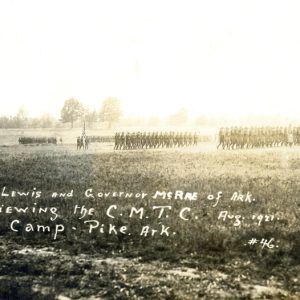 Camp Pike
Camp Pike 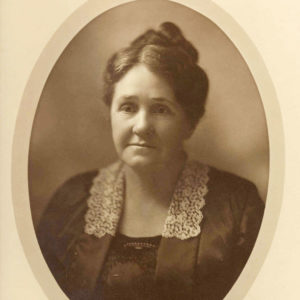 Amelia McRae
Amelia McRae  T. C. McRae House
T. C. McRae House 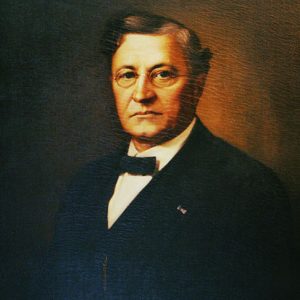 Thomas McRae
Thomas McRae 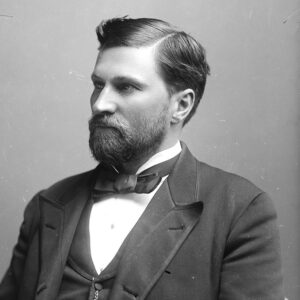 Thomas C. McRae
Thomas C. McRae 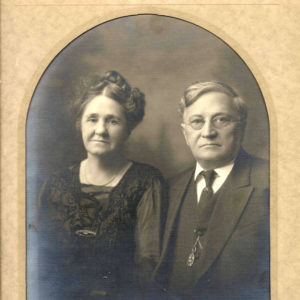 McRaes
McRaes 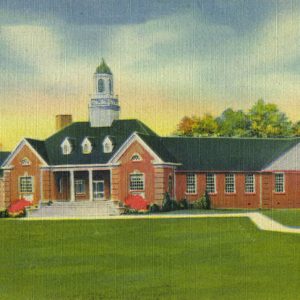 Thomas C. McRae Memorial Sanatorium
Thomas C. McRae Memorial Sanatorium 




Comments
No comments on this entry yet.